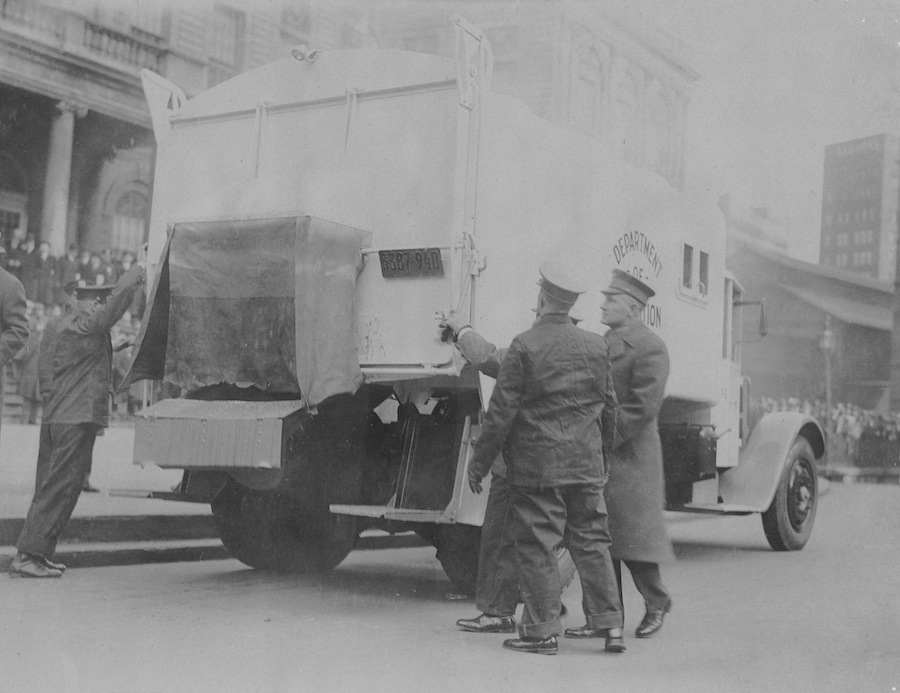Krupp
Essen, Germany
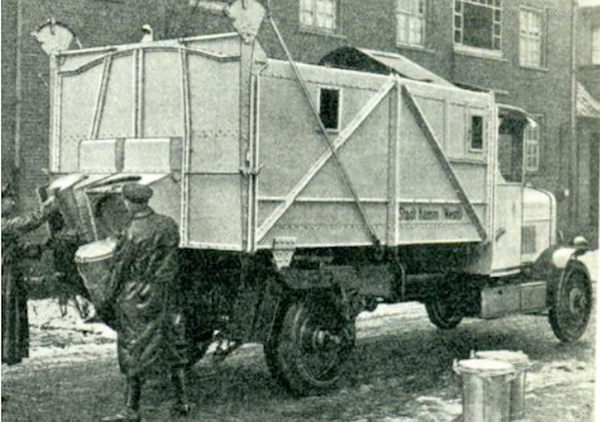
Krupp Motor Müllwagen, circa 1920s, with dual aperture dustless shutter 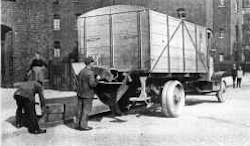 The manufacturing firm Krupp has a history which extends well beyond the scope this website. Family owned for nearly 400 years, the firm was most renowned for steel and armaments. Krupp cannons were considered the best in the world, and the firms proficiency with alloys made Krupp steel (Kruppstahl) the leader in its field. Following the First World War, Krupp was a very diverse company, whose products now included motor trucks and various types of municipal equipment. Although this constituted a relatively small part of their business activity, Krupp yet again holds another historical distinction, having designed the world's first compaction refuse body to be put into regular production. The body was patented in 1921, and it is almost certain some of them were in use by that year, or even earlier. The manufacturing firm Krupp has a history which extends well beyond the scope this website. Family owned for nearly 400 years, the firm was most renowned for steel and armaments. Krupp cannons were considered the best in the world, and the firms proficiency with alloys made Krupp steel (Kruppstahl) the leader in its field. Following the First World War, Krupp was a very diverse company, whose products now included motor trucks and various types of municipal equipment. Although this constituted a relatively small part of their business activity, Krupp yet again holds another historical distinction, having designed the world's first compaction refuse body to be put into regular production. The body was patented in 1921, and it is almost certain some of them were in use by that year, or even earlier.
The operating mechanism for what was to become the Krupp Motor-Müllwagen was not new at the time. The Archimedean screw, one of the oldest engineering concepts, was fairly common in mining, manufacturing and agriculture as a means of mechanical conveyance. A rotating shaft, with a continuous, spiral vane attached to its axis and set within an enclosure or trough, changed rotary movement into lateral movement. Heinrich Eckertz took the concept from his 1920 design of a motorized catch-basin cleaner, and adapted it to lift material from the rear of a truck into an enclosed body. In addition to loading, it was found to have a compacting effect on light refuse. From this inauspicious beginning, the refuse packer body industry had begun. During the 1920s and 1930s, Krupp refined their design, and added semi-dustless loading canopies, and later full dustless shutters as needed by municipalities using special bin systems such as Schmidt & Melmer and Ochsner. The Krupp Müllwagen was written about extensively in the journals of the 1920s. Its fame even spread to the United States, were the New York Department of Sanitation (DSNY) owned at least one example, one of their first mechanized units and in all likelihood, the very first compaction truck used in North America. The rise and fall of Nazi Germany almost brought about the end of the company. Alfried Krupp was imprisoned following trial in 1948 for the use of slave labor during the war. Vehicle production had resumed, now at Kulmbach under the name Südwerke during the remainder of the 1940s. Despite this abominable chapter in the company history, Alfried was granted amnesty in 1951, and regained much of the family business (sans armaments). The desire to counter Soviet influence in post-war Europe was the utmost concern to the allied occupation, and rebuilding Krupp was suddenly an imperative. By 1954, the vehicle division was once again trading as Krupp. However, economic changes and the death of Alfried in 1967 brought about a major reorganization and the end of truck production the following year. As the auger-screw design was perfected over the years, it has proven itself to be among the best at handling household refuse, not only by Krupp. Norba of Sweden, and Glover Webb & Liversidge of England produced numerous refuse bodies using the same principle, right through the 1970s. The auger compactor has an amazing crushing power. When built robustly, it will slowly digest almost any bulky object (including furniture and wooden pallets), reducing them to mere splinters. Inherent safety issues now preclude its use in most hand-loaded applications, but it is still used in stationary packers, and just recently returned to the USA in the New-Way Sidewinder automated side loader.
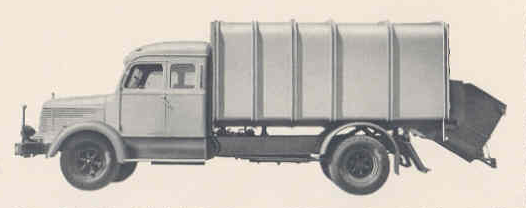
Post-war model from circa 1955 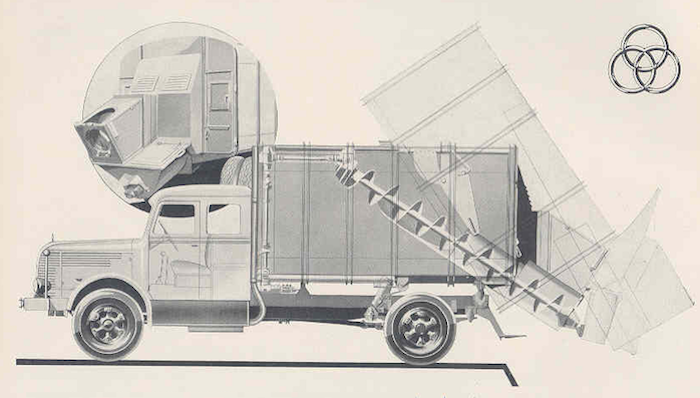
Post-war model cutaway view, showing auger and drive shafts/gears SELECTED PATENTS
|
